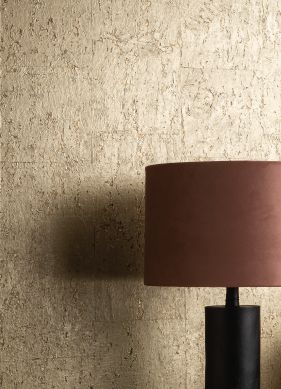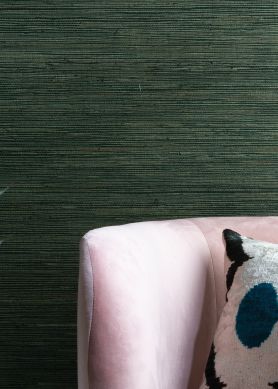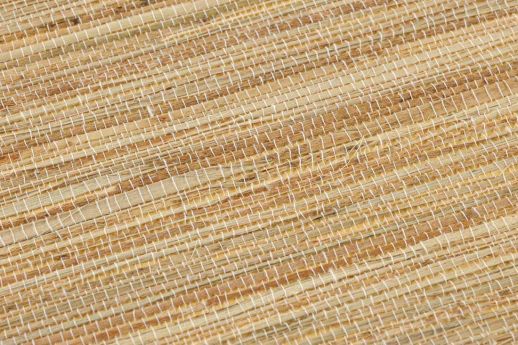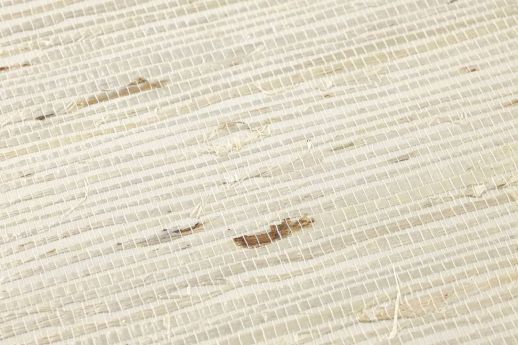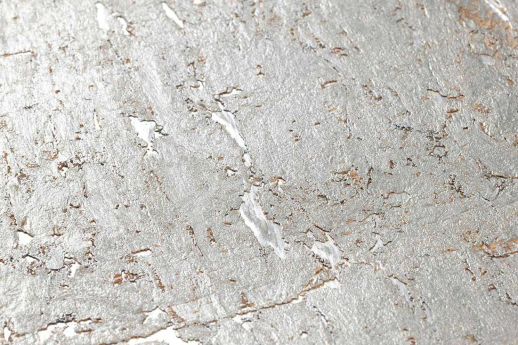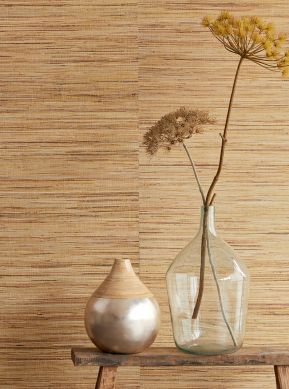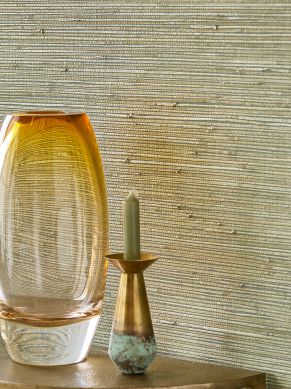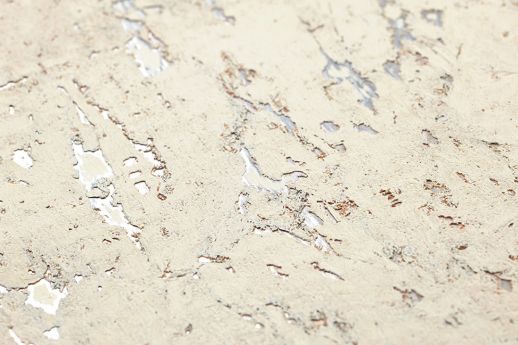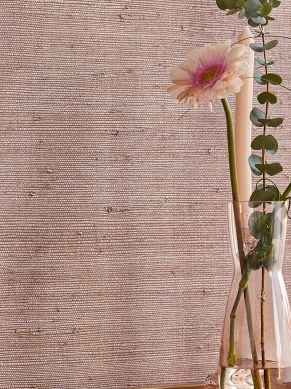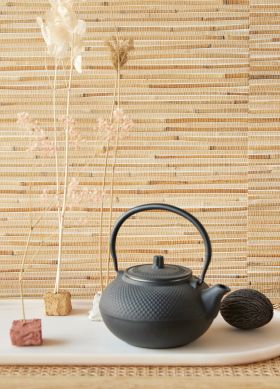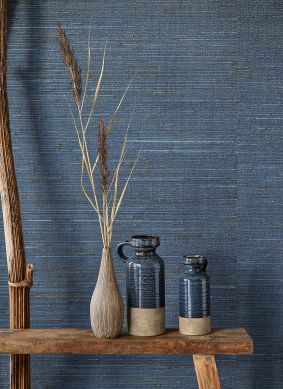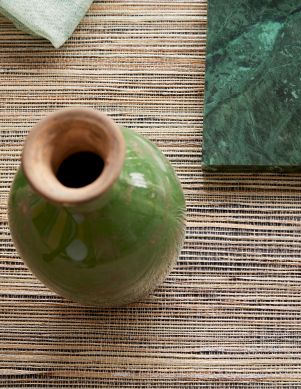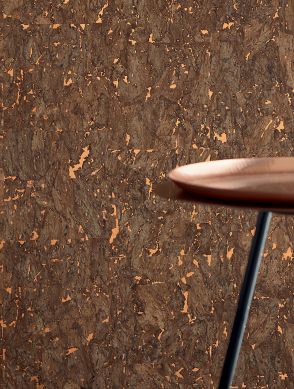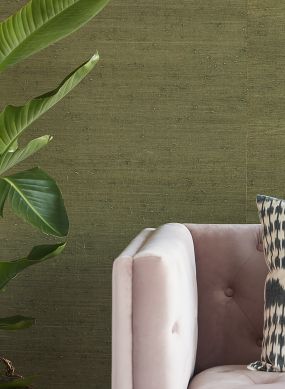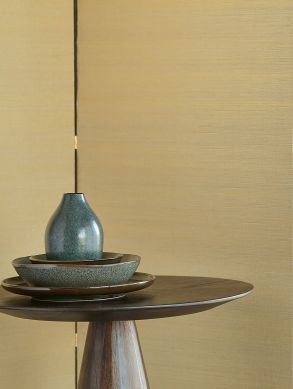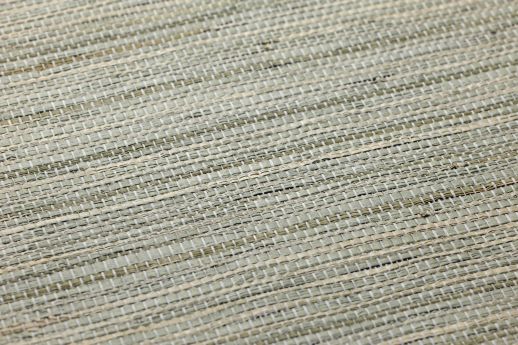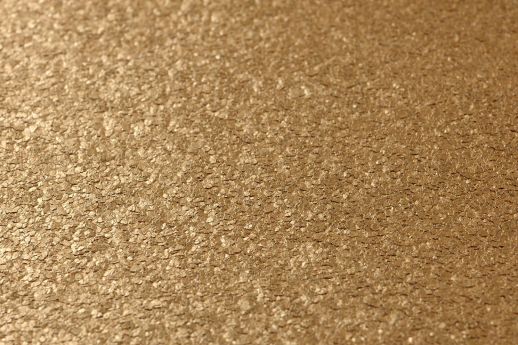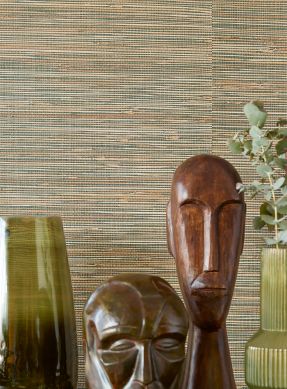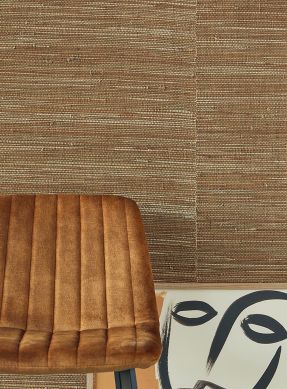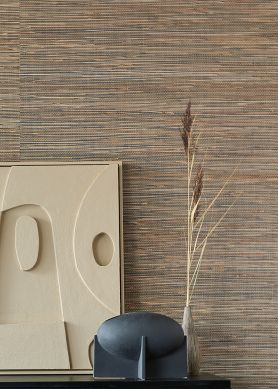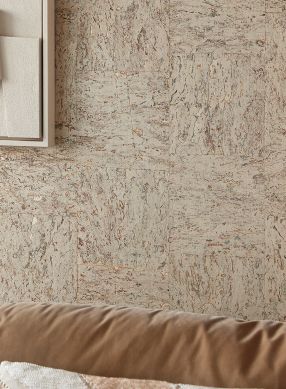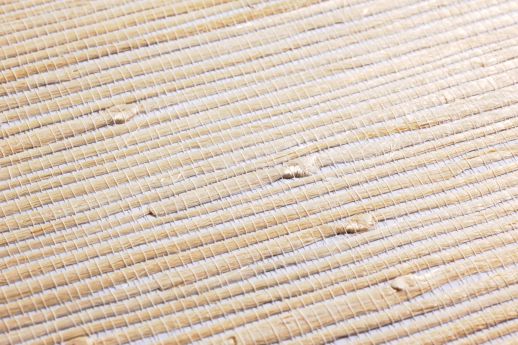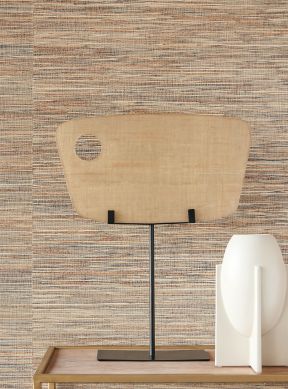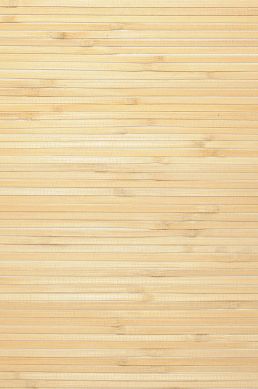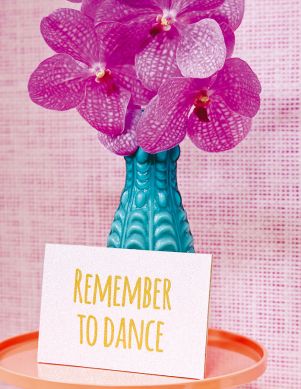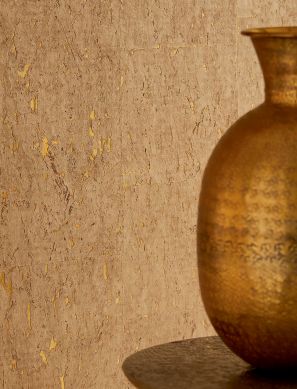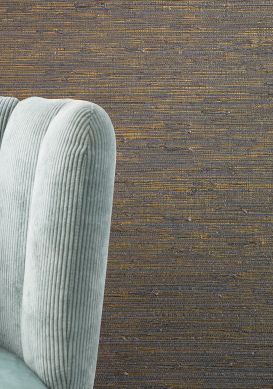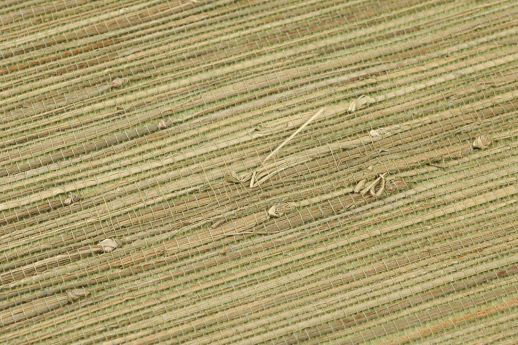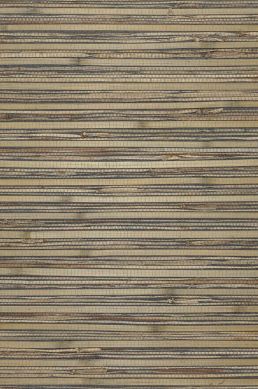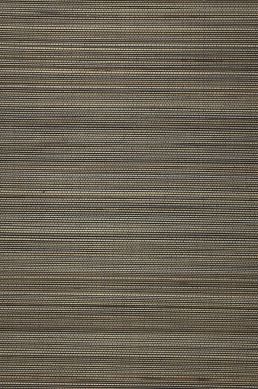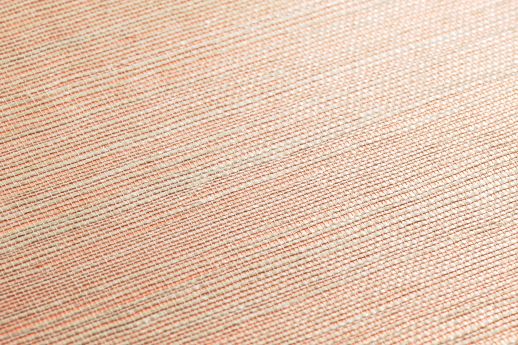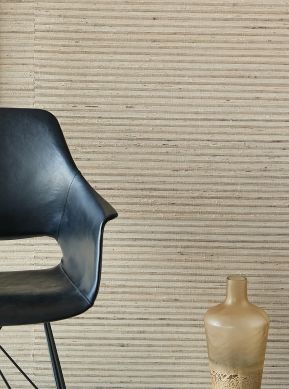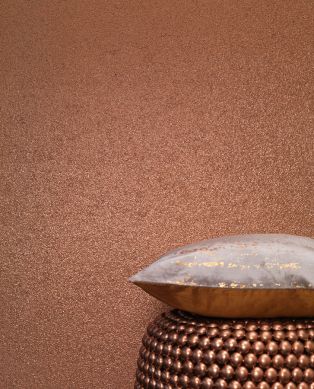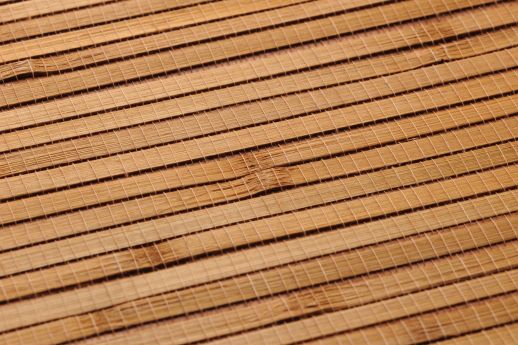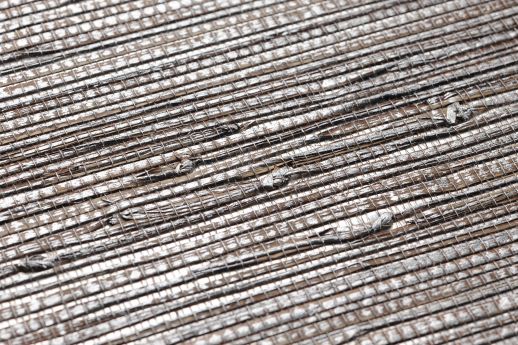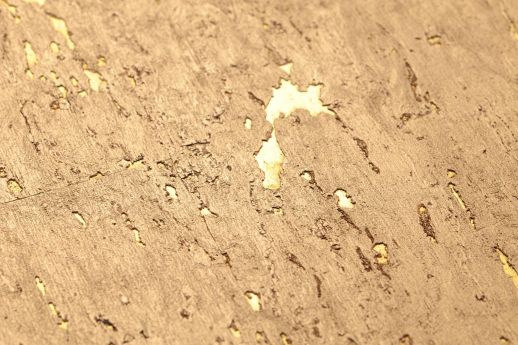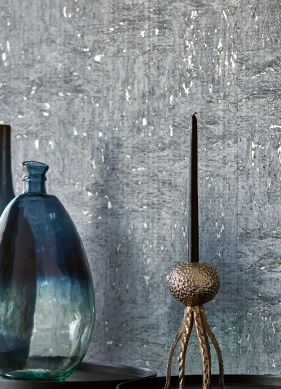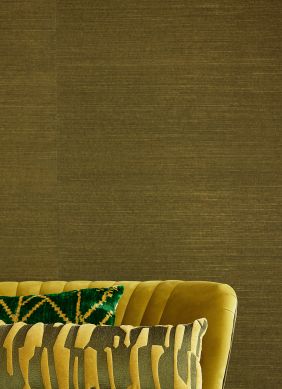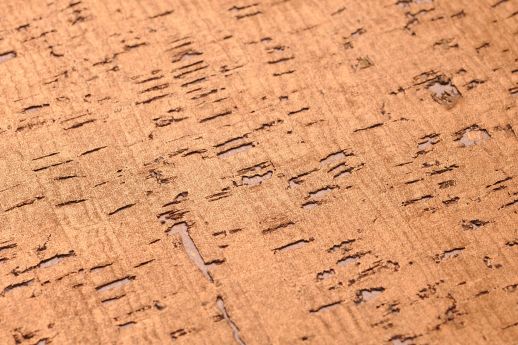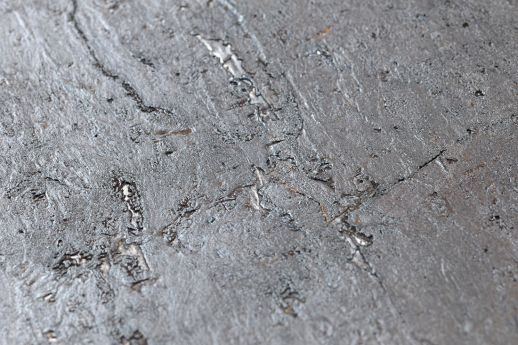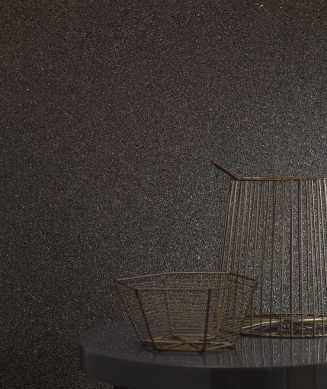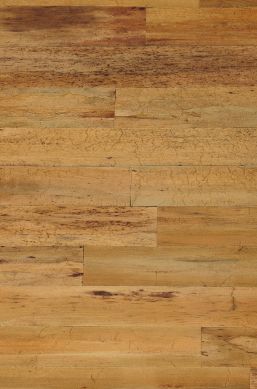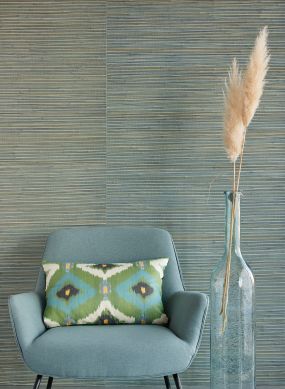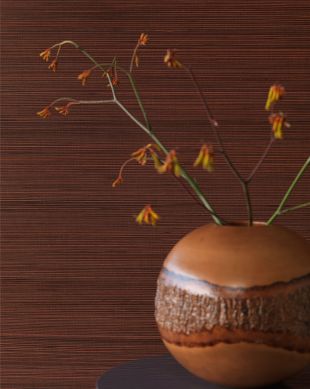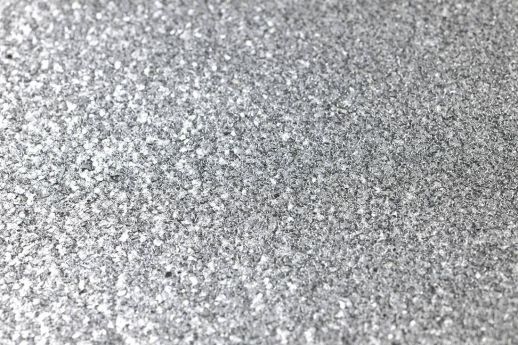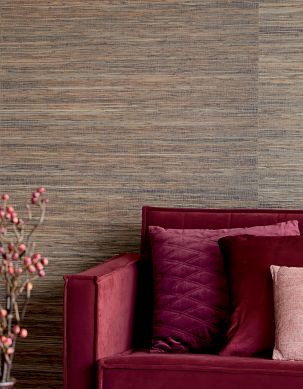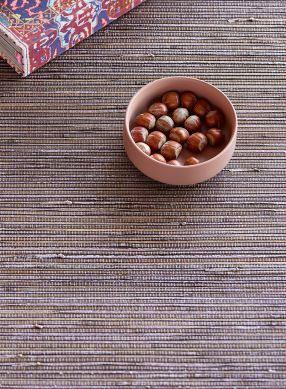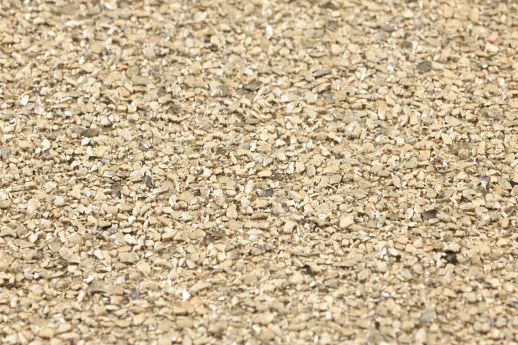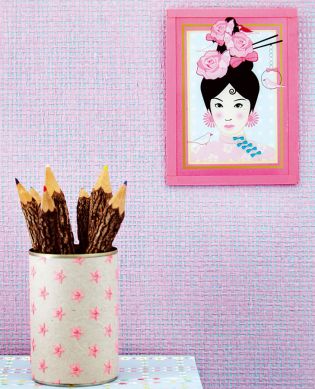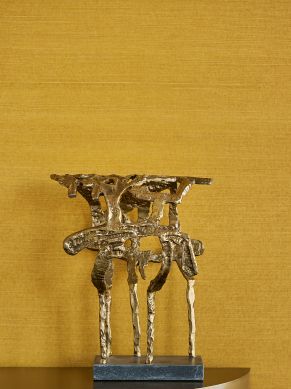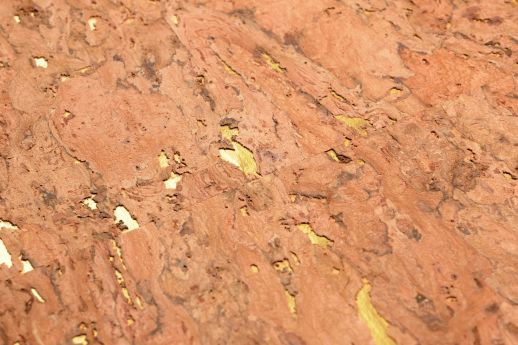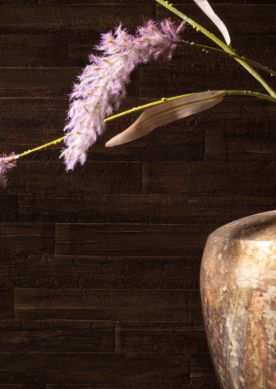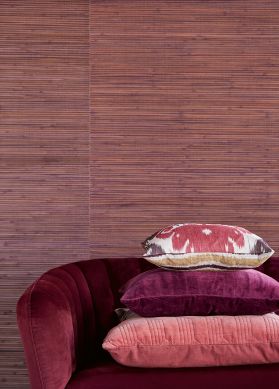Natural Wallpaper
Natural wallpaper: The Guide
Exotic grasses, tree bark or mica minerals give wallpaper surfaces a fascinating finish. Each natural material has its own special characteristics and unique textures which can be used for a variety of decorative room ideas. The resulting interior design concepts can be natural, elegant or sophisticated. Whether in the natural state or dyed: the rich colour palette of these stunning materials emphasises and shapes the natural structures in an exciting way. In addition, natural wallpapers also boast properties that have a positive influence on room climate and health.
Contents
- What does the term "natural wallpaper" mean?
- Which specific features characterise all nature wallpapers?
- How are grass wallpapers produced?
- Which plant species are used for grass cloth wallpaper?
- What are the characteristics of cork wallpapers?
- What is mica wallpaper?
- Why are wallpapers made of natural fibre so popular?
- What are the most popular colours for wallpapers with surfaces made of natural material?
- Which rooms are natural wallpapers most suitable for?
- In which formats can natural wallpaper be bought?
- What should be considered in terms of the application of, and care for, natural wallpaper?
- Which manufacturers specialise in wallpapers with natural-look surfaces?
- Our tips: Design ideas with natural wallpaper
What does the term "natural wallpaper" mean?
The carrier layer of natural wallpaper consists of paper or non-woven material. The surface layer is made of natural material, usually processed and glued on by hand.
Paper or non-woven carrier material
The carrier layer can be made of recycled paper or non-woven material (a compacted compound of cellulose and textile fibres). The main differences are in the application and later removal of the wallpaper. The ecological idea, which is an important factor with nature wallpapers, is served best by paper carrier layers.
Surface layer made of genuine natural material
Natural materials are applied to the carrier layer in a variety of processes, mostly by hand. The materials can be native or exotic grasses, but also cork bark, wood, bamboo or mica minerals. As the natural materials are laid out and glued onto the carrier material horizontally, the wallpaper can easily be rolled up.
Which specific features characterise all nature wallpapers?
Natural wallpapers are an environmentally conscious wall décor which does not contain any harmful substances. They are sound- and heat-insulating, breathable and moisture-regulating. The visibility of the seams is a quality feature of these usually monochromatic wallpapers which are put up without rapports.
No harmful substances
The pollution load of natural wallpaper tends to be close to zero as the materials used are usually untreated and natural. This is in sharp contrast to synthetic surface materials or vinyl wallpapers. It means that these decorative wallpapers are a healthy, harmless alternative. Hay fever sufferers, however, should not choose grass wallpaper. In addition, house dust can attach to these surfaces which has a negative impact on those suffering from dust allergies.
Environmentally conscious wall decoration
Natural wallpaper meets the requirements of environmentally friendly wall decoration in several respects. The pollutant-free natural materials as well as the carrier materials can be recycled. When it comes to the cultivation of the raw materials, ecological considerations and sustainability are at the forefront. Small agricultural enterprises in South East Asia have specialised in the cultivation of the required plants.
Sound and heat insulation
Depending on the type of materials used, natural wallpapers offer good to strong sound and heat insulation properties: They absorb noise and keep the heat in the room. These characteristics are particularly strong with cork bark, bamboo and hardy grasses.
Breathable and moisture-regulating
In combination with the (paper or non-woven) carrier layers, natural materials absorb moisture and release it back into the ambient air. They improve the room climate and prevent the growth of mould fungi. This significantly increases the feel-good factor that natural wallpapers inherently offer.
Visibility of seams
After wallpapering, the seams of models made with natural materials are visible on the wall. Each individual strip or length of wallpaper can be clearly identified. However, with natural wallpaper this is a quality feature, not a flaw. Natural materials are charmingly imperfect, which makes the individual materials as well as each wallpaper unique.
Mostly monochrome without rapport
Nature produces the most beautiful, unadulterated and sometimes unique colours, which are inherent in various natural materials. It is also possible to use environmentally friendly dyes to add some additional colour to the design. Nature wallpapers often just have one colour and their beauty lies in their natural structure and pattern. As a result, there is no pattern rapport when wallpapering - and no waste.
How are grass wallpapers produced?
Grass wallpapers are a popular variation of natural wallpapers. During the manufacturing process, grass and plant fibres are washed by hand, fibrillated, dyed, and dried in the sun. The resulting fabric is then laminated onto the carrier material.
Plant cultivation and harvest by local farmers
The plants and grasses required for natural wallpapers are grown by local farmers in Indonesia, Malaysia or the Philippines. These countries are known for their diverse grasslands, and they also have the best resources and cultivation areas. The farmers have a wealth of experience, especially as natural wallpapers have a long tradition in this part of the world.
Hand-washed and fibrillated
The next step is that the plants are washed and the structure fibres are separated from other components. The main distinction is made between bast fibres (bamboo, hemp, jute), leaf fibres (sisal, Manila hemp) and fruit fibres (coconut).
Dyed and sun-dried
The fibres can be dyed with environmentally friendly colours. This process can make natural colours more intense or create extravagant colour hues on natural wallpaper. The fibres are then dried in the sun. The fact that this mostly happens near the equator is of course very helpful.
Woven on a traditional loom
Yarn is created by combining individual dried blades of grass. These are then knotted together with thin cotton threads by hand. The resulting natural yarn is then woven on traditional looms. These labour-intensive production steps explain why the price of natural wallpaper is generally higher than that of industrially mass-produced models.
Laminating the fabric onto a carrier layer
The last step is gluing the fabric made of natural grass fibres to the paper/non-woven carrier material. Special glueing techniques and natural-based adhesives are used for this purpose. The best results are achieved by applying pressure and heat.
Which plant species are used for grass cloth wallpaper?
Grass cloth wallpapers have a surface of woven grass or plant fibres. The most commonly used natural materials include fibres of jute, sisal, arrowroot, hemp, banana leaf, water hyacinth and bamboo.
Jute
Jute is a natural fibre obtained from plants of the Corchorus family. Because of its colour and delicate shimmer, jute is also known as the "golden fibre". India and Pakistan are the main growing areas for Corchorus plants. Jute is both robust and soft and it is also fully biodegradable.
Sisal
Sisal is the name for the fibre from the leaves of the agave plant (sisal agave). This natural fibre has been used since the 19th century and found its way via Spain to North America, Tanzania and Brazil. Today, the sisal agave is spread all over the world. This light beige natural fibre is named after the Mexican port city of Sisal.
Arrowroot
The arrowroot (Maranta) plant comes in a number of variations, including the Indian Arrowroot. It is found in Africa, Asia, and Brazil, depending on the species. The name refers to its use as an antidote to the poisonous arrows of South-American Indians. The plant is mainly used for starch production, but the white fibres are also used as wallpaper material.
Hemp
Hemp is considered to be the oldest crop plant on the planet and belongs to the family of Cannabaceae. Hemp fibres are used for robust textiles and building materials. They are also used to produce robust, decorative natural wallpaper surfaces. This renewable raw material is easy to care for, durable, and boasts very good environmental sustainability.
Banana leaf
Banana leaves are found on so-called banana trees (Abaca). The dried leaves are cut into strips for processing and can also be twisted into cords. Manila hemp belongs to the banana plants whose fibres are used to make natural wallpaper. A firm yet smooth and soft structure is characteristic for banana fibres.
Water hyacinth
Water hyacinths are native to the South American tropics. The stems of this herbaceous, rapidly multiplying water plant are used to create natural wallpaper surfaces. Made pliable under hot steam, they can then be further processed for the use in wallpaper production.
Bamboo
Belonging to the sweet grass family, bamboo is one of the classics among natural materials used in interior design. The woody grass is considered an essential element in the design of Chinese gardens. Bamboo grows rapidly and reaches the height of growth necessary for harvesting after only one year. Bamboo veneer, rustic fabric made of bamboo fibres, or thin bamboo stalks are all used for wallpaper.
What are the characteristics of cork wallpapers?
Cork wallpapers create a cosy, warming atmosphere. This natural wallpaper surface is made from the bark of the cork oak from which a wafer-thin cork layer (veneer) is cut. This can be left in its natural state or dyed.
From the bark of the cork oak
The cork oak represents a special type of oak tree native to the western Mediterranean area. These ancient trees are used for cork extraction. Up to 200 kg of cork can be harvested from one cork oak during its lifespan. The bark is used for the production of cork wallpaper. Fortunately, the bark can be harvested without causing permanent damage to the tree.
Wafer-thin sliced cork veneer
Cork oak bark can be used to make wafer-thin cork veneer which is glued in small pieces by hand to the carrier material. For particularly high-quality and expensive cork wallpapers, the individual veneer pieces are arranged like inlays to form patterns.
Natural colour or dyed
The most popular cork veneer used for wallpaper is medium brown, as created by nature. However, this natural material can also be dyed in shimmering metallic colours, retaining the original characteristics of cork whilst adding a touch of modernity.
What is mica wallpaper?
The surface of mica wallpapers consists of naturally occurring mica minerals which are components of natural stones. They boast both beautiful glitter effects and a dynamic structure.
Glued-on mica minerals
"Mica" is the Latin word for glitter or glimmer and the technical term for a group of glittering minerals that occur in natural stones such as marble, granite and gneiss. The most famous mica minerals, mined as small stones, include fuchsite, muscovite and biotite. The tiny mica pebbles are glued onto paper or non-woven material.
Glitter effects
The seemingly moving structure of the small stones combined with their glittering effects attracts the eye and tempts us to touch it. Their slightly rough character emphasises the natural aspect, while exciting colours such as gold, copper or anthracite allow for sophisticated, modern design ideas.
Far Eastern interior design style
Mica wallpapers are particularly suitable for the Far Eastern style of furnishing which is natural, simple and understated. The many natural colours of these mineral stones also make it possible to create a rustic and colourful ambience.
Why are wallpapers made of natural fibre so popular?
Wallpapers made of natural materials convey a sense of warmth and comfort. They represent an exotic type of wall covering and their perfect imperfection is simply charming.
Conveying comfort and warmth
Since time immemorial, humans have been using natural fibres and natural raw materials for thermal insulation and "nest-building". Natural materials symbolise protection, safety and comfort, making a room inviting and cosy. In addition, the ecological aspect and the direct association with nature should be mentioned.
An exotic type of natural wall décor
Especially in Japan, China or the Orient, natural fibres are highly valued as wall coverings. The closeness to nature corresponds to the attitudes, values and teachings which these countries and areas represent. Natural wallpapers combine these elements and meet the requirements for restrained, purist interior design concepts.
Perfect imperfection
Nature creates its very own patterns and structures which seem almost inexhaustible. In wallpapers made of natural materials, this perfect imperfection manifests itself with visible knots, low colour tolerances and irregularities that characterise the natural motif. Every metre is unique, no two sheets are alike.
What are the most popular colours for wallpapers with surfaces made of natural material?
Looking at nature, we see a colour spectrum that synthetic colours cannot reproduce. Green, brown, blue, beige, grey, gold and silver as well as black and white in many shades and combinations are popular colours for natural wallpapers.
Green
Green is considered the colour of growth, renewal, and hope and represents the cycle of plants throughout the year. Every kind of plant green, including moss green, reed green, olive green, grass green, lends authenticity to natural wallpaper. Yellow-green and brownish shades are the main hues of real grass wallpaper.
Brown
The association with nature is particularly obvious with the earthy colour brown. Shades of brown seen on various different trees (e.g. cork oak), certain types of grass or even nuts and roots set the tone. There is a wide range from very light to intensely dark.
Blue
Blue symbolises the sky and the sea, it stands for vastness, freedom and relaxation. Natural materials which have been dyed blue combine unique structures with the fascinating magic of colour. Light nuances of blue are particularly popular. Indigo is a natural dye often used in the production of natural wallpaper.
Beige
The mixed colour is reminiscent of straw and natural wool. This harmonising colour characterises a variety of grasses and plant species used in wallpaper production, for example sisal, hay, hemp or bamboo.
Grey
The neutral colour grey emphasises intense colours and gives the room a special sense of peace. It is also found in nature, a beautiful example being the birch with its white-grey bark. Weathered old wood also boasts stunning shades of grey. Darker shades of grey look glamorous and sophisticated with a modern touch.
Gold and silver
These two precious metal colours have always inspired mankind. Gold and silver are components of nature, obtained from mines and pits. Gold stands for sun and splendour, silver is its cool but no less interesting counterpart. Golden hues such as oat gold and corn gold are also present in the plant world.
Black and white
Black has a mystical character and embodies sophisticated elegance. White symbolises purity, clarity, order - it is predestined for fresh design ideas. The colours of natural materials often come close to these two achromatic colours. Depending on the specific colour, dyeing gives the structure its own dynamic.
Which rooms are natural wallpapers most suitable for?
Breathable and ecological nature wallpaper is suitable for rooms where a healthy atmosphere is of particular significance. This includes bedrooms, living rooms, dining rooms and offices.
Bedroom
People are active at night, even if they do not notice it themselves. This releases moisture (sweat) into the ambient air which can be regulated by natural wallpaper. The sought-after feel-good factor is increased by the pleasant, warming structures. This creates a unique connection to nature.
Living room
Nature wallpapers are a great design element for a plethora of different living room styles. Far Eastern ZEN or Feng Shui concepts are just as much an option as natural-glamorous or rustic-rural interior design ideas. Criteria such as heat and sound insulation as well as breathability are also important requirements for wall coverings in living rooms.
Dining room
Food tastes twice as good when it is enjoyed outdoors. Natural wallpapers introduce real grass, plants, tree bark or wood veneer into the room. Bamboo, cork, meadow and mountain grasses exude cosiness and natural chic. Dining areas based on other cultures (e.g. the popular Asian look) can also be authentically recreated.
Office
Anyone who works full-time from home knows how important a healthy room climate is when it comes to maintaining concentration and performance levels. With wallpapers made of natural materials, office/study looks can be modern, elegant or extravagant. In today's office buildings, they also avoid that the working atmosphere is too cold and sterile.
Unsuitable for wet rooms
Natural wallpapers should not be used in rooms with high humidity levels such as kitchens and bathrooms. Due to the moisture, fibres can swell and the wallpaper might lose its unique appearance. Above a certain continuous moisture level, there is also a risk of mould and of the natural materials deteriorating.
In which formats can natural wallpaper be bought?
Natural wallpaper is available in two main formats: In rolls with clearly defined dimensions, or by running meter, where exact measurements are cut according to customer requirements.
Wallpaper rolls
Wallpaper rolls made of natural materials with standardised sizes are always 0.91 metres wide. There are different variations in terms of the length of rolls, but the most common is 5.50 metres. In contrast to models sold by running metre, rolls are somewhat cheaper, as there is no need for manual cutting to customer specifications.
By the metre
Natural wallpaper sold by the metre is usually available in a width of 0.91 metres with the length being individually cut to customer-specified measurements. This means getting the exact amount of metres that is needed for any given wallpapering project. There are no left-over pieces (as would usually be the case with rolls of fixed dimensions).
What should be considered in terms of the application of, and care for, natural wallpaper?
To put up natural wallpaper, a specific proportion of dispersion adhesive is added to the wallpapering paste. Paste stains must be avoided. Cleaning and care are limited to removing dust from the wallpaper with a soft feather duster.
Wallpapering paste with added dispersion adhesive
When it comes to hanging natural wallpaper, a special paste for heavy paper-based wallpaper or for non-woven wallpaper is required. As a general rule, 20% dispersion adhesive is added to the paste in order to increase the adhesive power. The higher the percentage of dispersion adhesive, the more difficult it is to remove the wallpaper later.
Avoiding paste stains
Paste stains must be removed immediately while still damp. The best way to do this is to use a damp sponge to carefully dab the paste off. When doing so, the surface must not be soaked through. Rubbing should also be avoided as this could damage the natural fibres.
Dusting with a soft duster
Wallpapers with surfaces made of natural materials are not washable and shouldn't be cleaned with a wet cloth. Dry cleaning is the only option. Occasionally going over surface with a soft feather duster should be sufficient. Vacuum-cleaning is not advisable as there is a risk of causing mechanical damage to the delicate wallpaper surface.
Which manufacturers specialise in wallpapers with natural-look surfaces?
Designing wallpapers with a natural surface texture requires a creative vein but also a certain amount of knowledge and experience in handling natural materials. Leading wallpaper manufacturers include Thibaut, Elitis and Candice Olson.
Thibaut
Thibaut, a wallpaper company founded in 1886 with headquarters in New Jersey, is considered the most successful wallpaper brand in the USA. Expressionist and avant-garde designs, striking colours and natural materials characterise these exclusive models which often re-invent traditional American designs.
Elitis
For those who love imaginative, striking pattern motifs, vibrant colours, and a fantastic selection of exciting Haute Couturematerials, French wallpaper brand Elitis is the perfect choice. Impressive grass cloth wallpapers made of banana leaves and abaca fibres in an almost inexhaustible array of colours are a forte of this manufacturer.
Candice Olson
"In stylish harmony with nature" could be the motto of Canadian wallpaper designer Candice Olson, who loves to work with natural fibres. Soft, light, natural or intense dark colours characterise her natural wallpapers made of cork oak bark and grass fibres, which make it possible to experience nature in a totally new way.
Our tips: Design ideas with natural wallpaper
- Living room with meadow and mountain grass wallpaper: A grass cloth wallpaper with meadow and mountain grass in mottled, dark brown-black-grey hues provides the natural basis for a feel-good room with plenty of character. Add a splash of colour with velvety upholstered furniture in ruby red or petrol green.
- Glamorous natural beauties in the bedroom: Silver-grey cork oak with a metallic shimmer or white mica stones envelop the room in a luxurious aura, further enhanced by the striking natural structure. Delicate shiny details create subtle plays of light that gently lull you to sleep.


